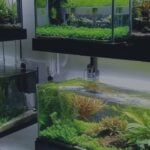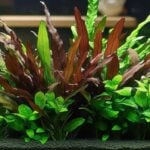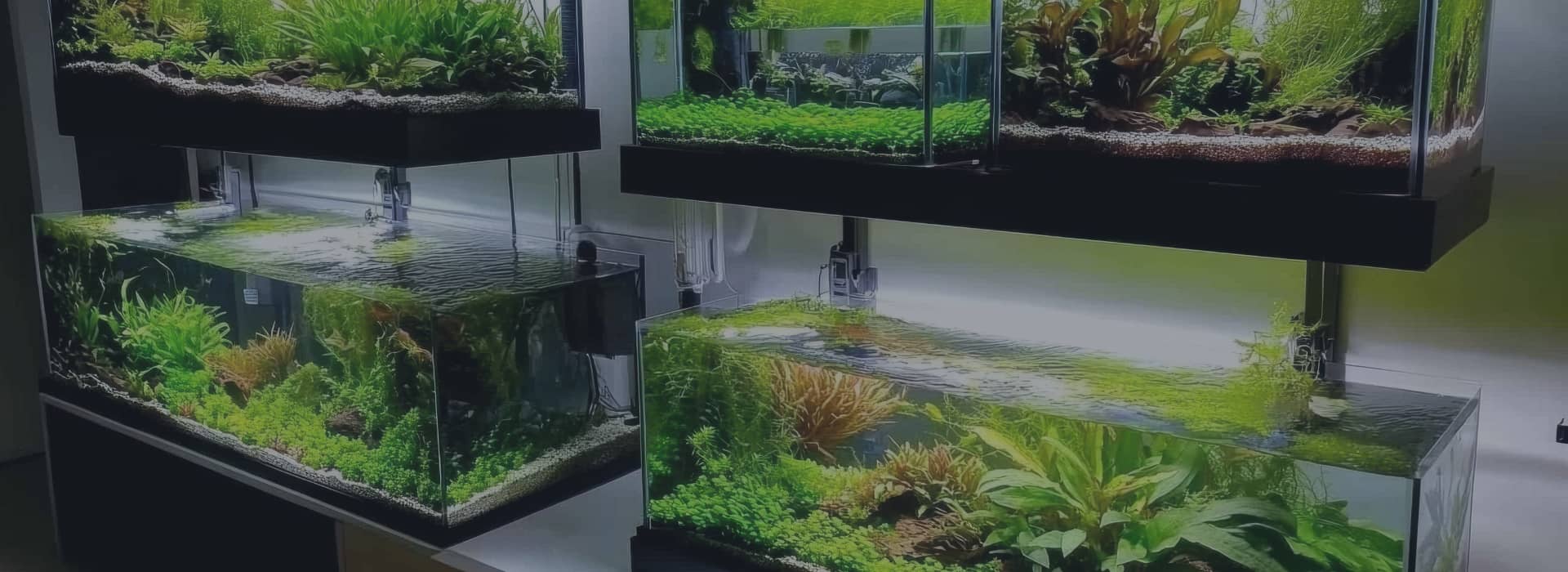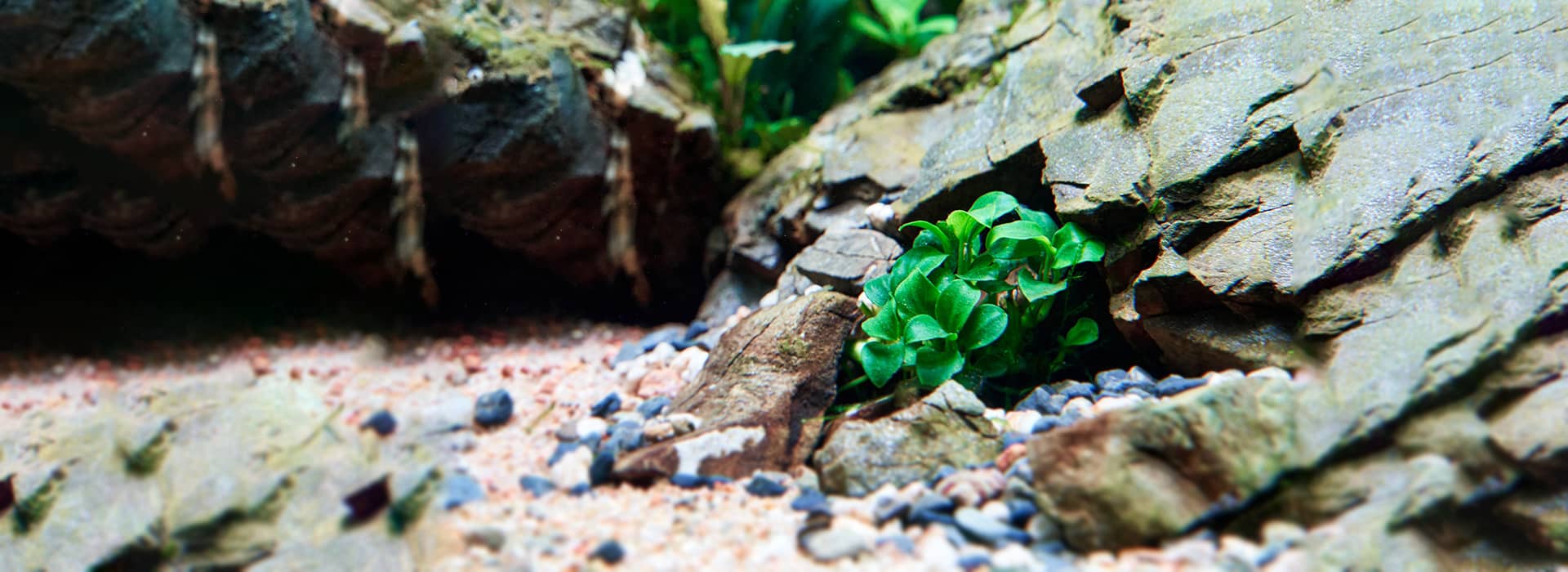If you’ve always been captivated by the vibrant underwater world but didn’t know where to start, you’re in the right place. Setting up an aquarium at home isn’t just a hobby; it’s a journey into a fascinating ecosystem that you can enjoy every day. In this guide, we’ll walk you through all the essentials—right from picking out a tank to introducing your first fish. Whether you’re an aspiring aquarist or just looking for a rewarding new pastime, read on. Your underwater adventure starts right here!
Introduction to Aquariums
Before we dive into the nuts and bolts of setting up your first aquarium, let’s take a moment to talk about what an aquarium really is and why it’s so special. You see, an aquarium is more than just a tank with water and fish; it’s a living, breathing ecosystem right in your own home. Think of it as your very own slice of the ocean or river, offering a window into the mesmerising world of aquatic life.
Here’s why aquariums are worth the effort:
- Stress-Reliever: Studies have shown that watching fish glide through the water can lower stress levels. It’s like having a zen garden, but with fins!
- Educational: From learning about different species to understanding water chemistry, maintaining an aquarium can be a fantastic learning experience for kids and adults alike.
- Decorative Element: A well-designed aquarium can be the centrepiece of any room, bringing a splash of life and colour to your living space.
- Responsibility: Caring for your aquatic pets instils a sense of responsibility and commitment, not unlike caring for a dog or a cat but with less fur to vacuum.
So, whether you’re looking to learn something new, or simply wanting to add a touch of nature to your home, an aquarium offers a world of possibilities. Stay tuned as we guide you through each step to turn that glass box into a thriving underwater oasis!
Types of Aquariums
Not all aquariums are one-size-fits-all. Depending on your interests, space, and the kind of aquatic life you’d like to keep, there’s an array of options available. Here’s a rundown to help you find your perfect fit.
- Freshwater Aquariums: These are the most common and beginner-friendly. They house freshwater fish and plants, making them easier and more affordable to maintain. You’ll often find varieties like guppies, tetras, and cichlids in these tanks.
- Saltwater Aquariums: A bit more challenging but incredibly rewarding, these house marine fish and coral. If you’re looking to create a mini–Great Barrier Reef at home, this is your go-to.
- Planted Aquariums: This is a type of freshwater aquarium that is ideal for plant enthusiasts as they focus on cultivating aquatic plants. They can be either freshwater or saltwater and often don’t contain fish.
- Biotope Aquariums: These are designed to replicate a specific natural environment, like an Amazon River basin or a coral atoll. Perfect for those who want to dive deep into the habitat of particular species.
- Nano Aquariums: If you’re short on space, these small aquariums (typically less than 75 litres) could be a great choice. They’re easier to fit into your home but require more frequent maintenance.
- Cold Water Aquariums: These tanks are for fish that prefer cooler water like goldfish and are generally easier to care for.
Choosing the right type of aquarium is the first big decision on your aquatic journey, and it will set the stage for everything that follows. Take your time and think about what really floats your boat in terms of budget, effort required, and personal preference before taking the plunge.
Location and Placement
Now that you’ve got a handle on the types of aquariums, let’s chat about where you’re going to place your new watery wonderland. Believe it or not, location can make a big difference to both the health of your aquatic mates and your own ease of maintenance. Here are some key considerations to keep in mind.
- Sunlight Exposure: Natural light might be great for your weekend barbie, but it’s not ideal for an aquarium. Excessive sunlight can cause algae blooms. Aim for a spot away from direct sunlight.
- Level Surface: Make sure your chosen location has a flat, stable surface. An uneven platform can put stress on the tank and may lead to cracks or leaks. No one wants a mini flood!
- Accessibility: Your tank will need regular upkeep, so place it somewhere easy to reach. You’ll be thankful when it’s time to clean the tank or feed your fish.
- Power Outlets: You’ll be using filters, heaters, and lights, so make sure you’ve got easy access to electrical outlets.
- Human Traffic: Consider the flow of people around the tank. A high-traffic area might stress out your fish but tucking it away in a forgotten corner defeats the purpose of having an aquarium as a focal point.
- Weight Factor: Water is heavy! Make sure the floor or stand can handle the load, especially for larger setups. For example, a 200-litre tank will weigh at least 200 kg when filled with water alone.
Choosing the right spot is a bit like finding the perfect fishing hole: take your time, consider all the variables, and remember, the better the location, the happier your aquatic ecosystem will be.
Tank Size Considerations
Size matters, especially when it comes to aquariums. Your tank size will not only dictate the amount of space you’ll need but also the types of fish and plants you can keep. So, let’s dive into some key factors to help you nail down the perfect size for your aquatic haven.
- Fish Load: As a general rule, allow about 30 to 40 litres of water per small fish. If you’re dreaming of an underwater metropolis, you’ll need to opt for a larger tank.
- Type of Fish: Some fish like to roam, and some are happy in a cosy nook. Research the species you’re interested in to see how much space they require. For example, larger species like Oscars will need a tank of at least 200 litres.
- Maintenance: Larger tanks are generally more stable when it comes to water chemistry and temperature, but they’ll also need more cleaning and a beefier filter system.
- Budget: Bigger tanks not only cost more upfront but also in the long run. Think about the costs for extra equipment, maintenance, and energy usage before you go big.
- Room Space: It might sound obvious, but make sure you measure the area where you’ll place the tank. Don’t forget to account for the stand, hood, and any additional equipment you’ll be using.
- Future Additions: Planning on expanding your aquatic family down the line? It might be worth getting a slightly bigger tank now to save the hassle later.
- Visual Impact: Sometimes size is also about the ‘wow’ factor. A larger tank can be a stunning centrepiece in a room, while a smaller tank might work better as an accent or conversation starter.
Remember, a well-chosen tank size will set you up for success, making both you and your aquatic pals happier in the long run. So weigh up your options and choose wisely!
Equipment Checklist
Alright, so you’ve settled on your tank size and found the perfect spot for it. Now comes the fun part—shopping for all the gear you’ll need! Here’s a straightforward checklist to guide you through the maze of aquarium equipment.
- Stand: Make sure it’s sturdy and can handle the weight of a fully loaded tank.
- Filter System: A good quality filter is crucial. Go for one rated for twice your tank size.
- Heater: Essential if you’re keeping tropical fish. Again, make sure it’s appropriate for your tank’s volume, measured in litres.
- Thermometer: A simple, submersible model will do the trick to help you monitor the water temperature.
- Lighting: LED lights are energy-efficient and bright, perfect for both fish-viewing and plant growth.
- Air Pump: For added oxygen and to improve water circulation. A must-have if you’re going for a densely populated tank.
- Gravel or Substrate: Depending on your aesthetic and the needs of your plants and fish, you might choose gravel, sand, or specialised plant substrate.
- Decor and Plants: Whether you go for live plants or artificial ones, make sure to add some hidey-holes and decorations for your fish to explore.
- Water Conditioner: To remove harmful chlorine and make tap water safe for your aquatic mates.
- Fish Food: Choose a type suited for your specific fish. A mix of flakes and frozen food usually works well.
- Test Kits: These will help you keep tabs on your water quality, testing for things like pH, ammonia, and nitrites.
- Cleaning Supplies: A siphon for water changes, an algae scraper, and a net for fish handling.
And there you go! Armed with this checklist, you’re all set to build an aquatic paradise. Happy shopping!
Filtration Systems
Filtration is the unsung hero of any thriving aquarium. Think of it as the kidneys of your fishy paradise, silently working in the background to keep the water clean and healthy. So, let’s delve into the different types of filtration systems you can choose for your tank.
- Mechanical Filtration: This is your first line of defence against debris like uneaten food and fish waste. Mechanical filters physically trap these particles, making it easier to remove them later. Sponge and foam filters are classic examples.
- Chemical Filtration: Chemical filters are like the detectives of your aquarium, seeking out and neutralising harmful substances. Activated carbon is a common material used here, excellent at removing odours and discolouration.
- Biological Filtration: Now, let’s talk about the real stars—beneficial bacteria. These microscopic mates help break down harmful ammonia and nitrites into less toxic nitrates. Ceramic rings and bio-balls are popular media choices for encouraging bacterial growth.
Types of Filters: Hang-on-Back (HOB) Filters are easy to install and great for small to medium-sized tanks. Canister Filters are the workhorses, suitable for larger tanks. They usually combine all three types of filtrations. Undergravel Filters sit beneath the substrate and are typically used in conjunction with an air pump. Internal Filters are ideal for nano or smaller tanks and are placed directly inside the aquarium.
Choosing the Right Filter: When selecting a filter, always aim for one that can handle the full volume of your tank. As a rule of thumb, look for a filter that can circulate at least two times the total litres of your aquarium per hour.
A proper filtration system is the backbone of a happy, healthy aquarium. Take your time choosing the right one, and you’ll be well on your way to becoming a bona fide fish whisperer.
Lighting
LED lighting is the go-to option I’d recommend for several reasons: they’re energy-efficient, long-lasting, and offer a wide range of colours and intensities. Now that we’ve got that sorted, let’s dive into how to set up proper lighting in your tank.
- Start With Placement: Make sure your LED lighting fixtures are securely and evenly placed over the tank to avoid dark corners and provide uniform light distribution.
- Ease Into It: Begin with shorter periods of light and gradually increase the duration over a week to help your aquatic mates adjust without stress.
- Timers Are Your Mate: Automate your lighting with a timer. Aim for 8 to 12 hours of light to simulate a natural day-night cycle.
- Tweak the Intensity: Adjustable LED lighting allows you to cater to the specific needs of your plants and fish. Some need low light, others something brighter.
- Watch for Algae: Too much light can cause algae blooms. If your tank starts looking like a green soup, it might be time to adjust your lighting settings.
- Temperature Check: Even though LEDs are generally cooler, it’s still good to regularly check your water temperature. If it’s too warm, you may need to adjust your lighting time or add a chiller.
LEDs not only save you money but also offer flexibility and reliability. Proper lighting can make a world of difference in both the health and aesthetics of your aquarium. Now, go ahead and light up your underwater world.
Heating and Cooling
Keeping your aquarium at the right temperature is a bit like Goldilocks finding the perfect porridge—it has to be just right. Let’s talk about how to nail your heating and cooling.
Why It’s Vital: Stable temperature ensures your fish and plants live comfortably and stay healthy. Fluctuations can lead to stress and illness.
The Heater: Go for a submersible, adjustable heater. The wattage should roughly be 1 watt per litre of water, but this can vary depending on your room’s temperature.
The Thermostat: Many heaters come with built-in thermostats, but an external one is more accurate. Keep the water temperature between 24-28°C for tropical tanks and 20-24°C for cold-water tanks.
Cooling Off: If you’re dealing with higher temps, especially in the summer, consider using a clip-on fan or aquarium chiller to bring down the temperature.
Seasonal Adjustments: In winter, you might need to bump up the heater. Conversely, you may need to dial it down or rely on cooling methods during the hot months.
Quick Checks: Regularly check your temperature with a reliable aquarium thermometer to make sure everything’s running smoothly.
The right temperature is the foundation of a thriving tank. A bit of planning and regular monitoring will go a long way.
Substrate Selection
Choosing the right substrate for your aquarium is more than just an aesthetic decision; it’s a critical part of establishing a healthy ecosystem within your tank. The type of substrate you choose can significantly affect the water quality and provides a home for beneficial bacteria. It also contributes to the well-being and comfort of your aquatic friends.
For most freshwater aquariums, gravel is a solid, versatile choice. However, if you’re planning on adding plants, you might want to consider specialised sand or soil that can better support aquatic plant life. When it comes to colour and size, lighter hues generally make your tank appear brighter and are also more effective at showing any accumulated dirt.
As for the size, aim for gravel that’s between 2 to 5 mm in diameter. To figure out how much you’ll need, a good rule of thumb is to aim for about 2.5 cm of substrate depth in tanks without live plants and up to 7.5 cm for those with plants.
You can calculate the exact amount needed using the formula:
(Tank Length in cm x Tank Width in cm x Desired Substrate Depth in cm) / 1000.
This will give you the litres of substrate you’ll need. Regardless of your choice, it’s crucial to rinse the substrate thoroughly before adding it to your tank to remove any dust or small particles. So, in essence, the right substrate doesn’t just serve as the ‘floor’ of your tank; it’s the foundation for a flourishing aquatic environment.
Water Quality Parameters
In layman’s terms, getting your water parameters right is like making sure the soil in your garden is perfect for your plants. And it’s not as daunting as it sounds, I promise!
Key parameters to watch include pH levels, which should typically range from 6.0 to 7.8 depending on your fish species. For temperature, aim between 22°C and 28°C. Ammonia and nitrite levels should be as close to zero as possible, while nitrate can be a bit more lenient but should stay below 40 mg/L.
Don’t forget hardness and alkalinity, which help stabilise your pH levels. A general hardness (GH) of 6-12 dH and carbonate hardness (KH) from 4-8 dH is often a safe bet for most freshwater fish.
See? Not too complicated! A simple test kit from your local pet shop can help you keep these in check.
Cycling the Aquarium
Cycling your aquarium is a crucial step to create a healthy environment for your fish. This process establishes beneficial bacteria that break down waste, leading to balanced water conditions as a part of the biological filtration mentioned earlier. Let’s get right into how to do it effectively.
Start by filling your tank with dechlorinated water. Dechlorinators are available at most pet shops, and it’s a vital step to make your tap water safe for aquatic life.
Next, add a source of ammonia to kickstart the bacterial growth. You can use fish food or a specific ammonia source designed for cycling. Monitor your ammonia, nitrite, and nitrate levels using a test kit. Aim for ammonia levels at about 3-4 ppm (parts per million).
Introduce a bacterial starter if you want to speed up the process. These are live cultures of beneficial bacteria and can give the cycling process a head start.
Keep an eye on your water parameters. You’ll know your tank is cycled when ammonia and nitrite levels drop to zero and nitrates begin to rise. This usually takes 4-6 weeks but can vary.
Once cycled, gradually introduce your fish into the aquarium. It’s best to start with hardy species as they are more forgiving to fluctuations in water conditions.
Adding Live Plants
Adding live plants to your aquarium can add a natural touch, and they have the bonus of improving water quality. However, this step is entirely optional and does require a bit more care and maintenance than using artificial plants. So, let’s delve into how to make your aquarium a leafy paradise, should you choose to go that route.
Choosing the Right Plants
When you’re starting off, it’s good to choose easy-care plants like Java Fern, Anubias, and Amazon Sword. These are hardy and straightforward to maintain.
Optional but Worthwhile
While adding live plants is optional, they offer benefits like oxygenation and natural filtration. But they do require additional care compared to artificial plants.
Additional Effort Required
Keeping live plants will mean monitoring their growth, ensuring they get adequate light and nutrients, and occasionally trimming them to keep them healthy.
Recommended Plants
Java Fern, Anubias, Amazon Sword, Hornwort, and Moss Balls are among the great plants for beginners. They each have their own care requirements, so make sure to read up on them before making your choice.
Adding live plants to your aquarium is a decision that should be based on your commitment to upkeep, as they require a bit more attention than going the artificial route but they also add an entirely new dimension to the hobby.
Choosing Fish Species
Picking the right fish for your aquarium is a blend of personal preference and practicality. It’s not just about what catches your eye; you’ve got to consider factors like water parameters, compatibility, and adult size of the fish.
- Freshwater Picks: If you’re diving into freshwater aquariums, some top picks include Guppies, Platies, and Tetras. These are relatively low-maintenance and great for beginners.
- Saltwater Stars: For saltwater enthusiasts, Clownfish, Gobies, and Damselfish make excellent options. They’re colourful and relatively easier to care for compared to other saltwater species.
- Tailor to Your Tank: Always tailor your fish selection to the size and capacity of your tank. Overcrowding leads to stressed fish and poor water quality. In Australia, we usually measure tank capacity in litres, so keep that in mind when planning.
Overall, whether you go freshwater or saltwater, your choice of fish should not only add visual interest but also contribute to a balanced and harmonious aquatic environment.
Routine Maintenance
Keeping your aquarium in tip-top shape isn’t a ‘set and forget’ process. Regular maintenance is vital for the well-being of your aquatic friends and plants. Here’s how to make sure everything stays on the up and up.
Water Changes
At least once a week, aim to replace 20-25% of the water in the tank. Use a water conditioner to treat tap water before adding it in, ensuring it’s free from harmful chemicals.
Filter Check
Clean your filter once a month. If you notice reduced water flow or cloudy water, it may need attention sooner. Always check the manufacturer’s guide for specifics.
Glass Cleaning
Every two weeks, use an algae scraper to clean the internal glass of the tank. This prevents unsightly build-up and enhances your viewing pleasure.
Gravel Vacuum
While changing the water, use a gravel vacuum to remove debris from the substrate. This keeps the environment clean and the water chemistry stable.
Plant and Ornament Clean-Up
Artificial plants and ornaments can accumulate algae and debris. Clean them with hot water (never soap!) during your monthly filter check.
Equipment Check
Regularly inspect heaters, lights, and pumps to ensure they’re functioning correctly. If something’s on the fritz, replace it as soon as possible to avoid larger issues.
Test the Waters
Using a water test kit, check the pH, ammonia, nitrite, and nitrate levels every week. Keeping these parameters stable is crucial for the health of your fish and plants.
By incorporating these steps into a regular routine, you’ll be ensuring a healthy, beautiful aquatic home for all your finned and leafy residents.
Budget and Costing
Keeping your aquarium in tip-top shape isn’t a ‘set and forget’ process. Regular maintenance is vital for the well-being of your aquatic friends and plants. Here’s how to make sure everything stays on the up and up.
Water Changes
At least once a week, aim to replace 20-25% of the water in the tank. Use a water conditioner to treat tap water before adding it in, ensuring it’s free from harmful chemicals.
Filter Check
Clean your filter once a month. If you notice reduced water flow or cloudy water, it may need attention sooner. Always check the manufacturer’s guide for specifics.
Glass Cleaning
Every two weeks, use an algae scraper to clean the internal glass of the tank. This prevents unsightly build-up and enhances your viewing pleasure.
Gravel Vacuum
While changing the water, use a gravel vacuum to remove debris from the substrate. This keeps the environment clean and the water chemistry stable.
Plant and Ornament Clean-Up
Artificial plants and ornaments can accumulate algae and debris. Clean them with hot water (never soap!) during your monthly filter check.
Equipment Check
Regularly inspect heaters, lights, and pumps to ensure they’re functioning correctly. If something’s on the fritz, replace it as soon as possible to avoid larger issues.
Test the Waters
Using a water test kit, check the pH, ammonia, nitrite, and nitrate levels every week. Keeping these parameters stable is crucial for the health of your fish and plants.
By incorporating these steps into a regular routine, you’ll be ensuring a healthy, beautiful aquatic home for all your finned and leafy residents.
FAQ
What size tank should I start with?
A good rule of thumb for beginners is to start with at least a 60-litre tank. This size offers a stable environment for your fish and is manageable in terms of maintenance
Freshwater or Saltwater: Which is easier?
Freshwater aquariums are generally easier and cheaper to maintain. Saltwater tanks require more expertise and are costlier but offer a wider variety of vibrant fish and corals.
How long should I wait before adding fish?
You should cycle your aquarium for at least 4-6 weeks before adding any fish. This allows beneficial bacteria to develop and helps stabilise the water parameters.
Do I need live plants in my aquarium?
Live plants are optional but come with added benefits like oxygenation and natural filtration. However, they do require more care, including specific lighting and possible fertilisation.
How often should I clean the tank?
Routine maintenance, including partial water changes and filter cleaning, should be done every two weeks. This keeps your water quality high and your fish happy.
Conclusion
In wrapping up our guide on “Setting Up Your First Aquarium,” we hope you’re now equipped with the essential knowledge and insights to create a thriving underwater environment. Whether you opt for a modest 60-litre freshwater setup or dive into the more complex world of saltwater tanks, remember that patience and ongoing maintenance are key. It might seem daunting at first, but the reward of a vibrant, healthy aquarium is well worth the effort. With careful planning, consistent upkeep, and a touch of aquatic flair, you’ll be well on your way to becoming a seasoned aquarist. Happy fishkeeping!








